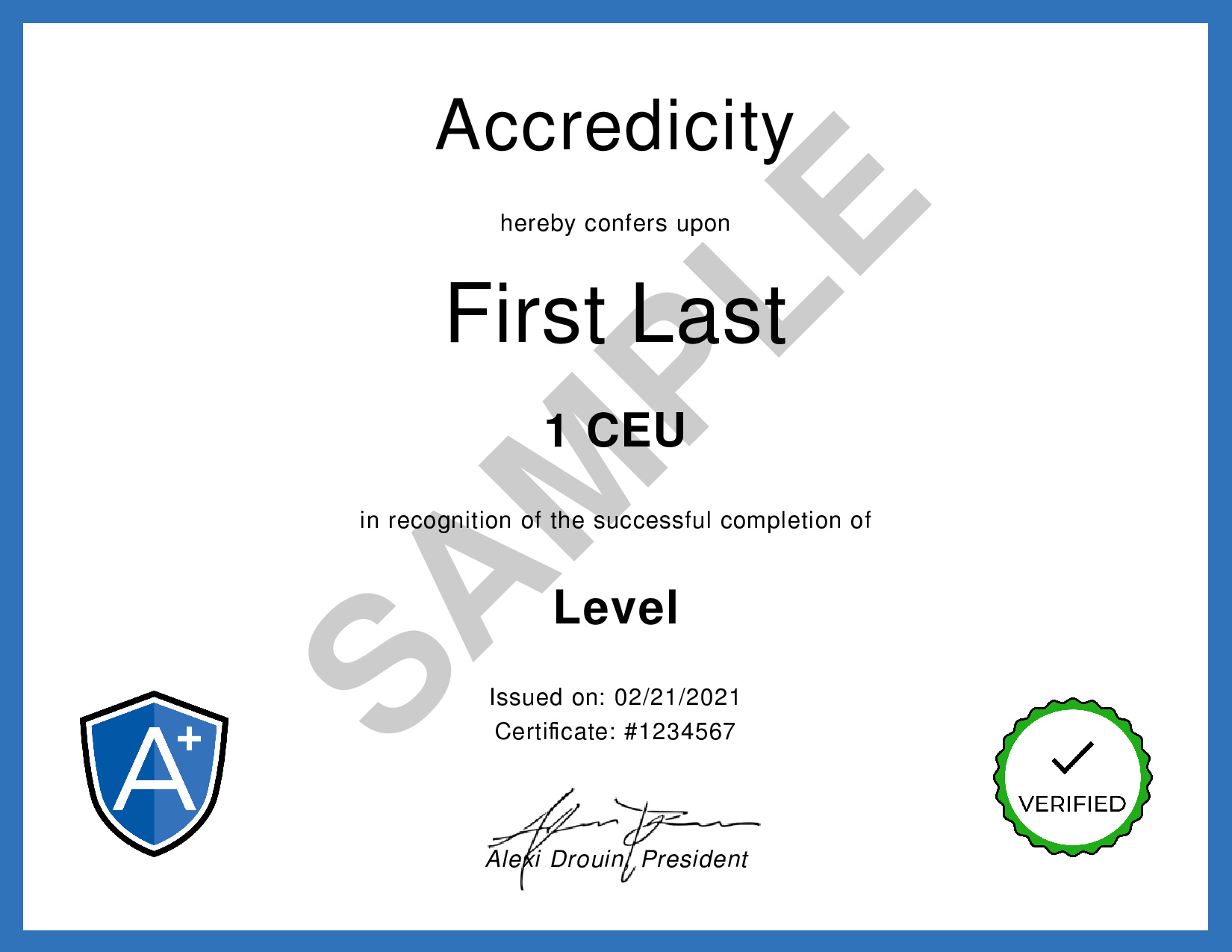How to Persuade Others: Jedi Mind Tricks | Daniel H. Pink | Big Think
We Make Your Education Count

Get the Credit You Deserve and Become the Most Attractive Job Candidate by Earning and Posting A+ Badges to Your Linkedin Profile.
Sign Up to Get Started at Accredicity
|
Unlock the secrets of persuasive Jedi Mind Tricks with Daniel H. Pink and learn to ask the right questions to get the answers you need. In this video, Daniel H. Pink explains how to persuade others using the right questions. He discusses the concept of motivational interviewing which involves asking two irrational questions. Pink gives an example of a parent trying to persuade their teenage daughter to clean her room. He suggests asking, “On a scale of one to ten, how ready are you to clean your room?” and then “Why didn’t you pick a lower number?” This allows people to articulate their own reasons for doing something, thus making them believe in the behavior more strongly. Pink states that understanding why someone is a ‘one’ is important and providing the right context can help to make them a ‘two’. Learning Outline1. Motivational interviewing is a technique from the counseling literature which involves asking two irrational questions. Instructional ContentDo you ever find yourself struggling to convince others to do something? Whether it’s dealing with a disobedient teenager, trying to persuade a neighbor to move their garbage cans, or even convincing your boss of a great idea, persuasion techniques can be invaluable. In the Big Think video, “How to Persuade Others with the Right Questions: Jedi Mind Tricks”, Daniel H. Pink explains the technique of motivational interviewing and how it is used to effectively persuade others. Motivational interviewing is a technique developed by Mike Pantalon of Yale University and it involves using two irrational questions to persuade someone to do something. The technique is to ask the person how ready they are to do something on a scale of 1-10 and then to ask why they didn’t pick a lower number. The key to successful persuasion with this technique is to surface people’s own reasons for doing something. As Pink explains, when people have their own reasons for doing something, they believe those reasons more deeply and adhere to the behavior more strongly. The technique can be used in a variety of situations, from parenting to sales, and it is an effective way to help people understand why it is important to do something. By asking people the right questions, you can create the perfect environment to persuade them and ultimately get them to do what you want. Watch the Big Think video, “How to Persuade Others with the Right Questions: Jedi Mind Tricks”, to learn more about the technique of motivational interviewing and how it can help you successfully persuade others. Communication
|

Persuading someone is like Jedi Mind Tricks! If you want to get your teenage daughter to clean up her messy room, instead of bribing or threatening her, use two questions. Ask her to rate how ready she is on a scale of 1 to 10, and then ask her why she didn't pick a lower number. This will help her come up with her own reasons for cleaning up and make her more likely to do it. It's like a magic spell! Video Quotes"When people have their own reasons for doing something – not yours – their own reasons for doing something they believe those reasons more deeply and adhere to the behavior more strongly." - Daniel H. Pink "The key here – and again you've got to go back to first principles here. The key here is that we tend to think that persuasion or motivation is something that one person does to another. And what the social science tells us very clearly is that it's really something that people do for themselves." - Daniel H. Pink "Your job as a persuader, as a motivator, is to reset the context and surface people's own reasons for doing something." - Daniel H. Pink Related Quotes"The best way to persuade people is with questions, not answers." - Daniel H. Pink Competencies1. Influence and Persuasion Learning Outcomes1. Remember: Identify the persuasive techniques discussed in the video (e.g. motivational interviewing, bribing, threatening). Sample Answers1. I learned that motivational interviewing is a technique from the counseling literature that can be used to persuade someone to do something. It involves asking two irrational questions - one to assess the readiness level of the person and the second to get them to explain why they didn't pick a lower number. 2. By asking these two questions, the person being persuaded is able to articulate their own reasons for doing something, which makes them believe those reasons more deeply and adhere to the behavior more strongly. 3. Additionally, if someone rates their readiness level as a one, the persuader can ask what can be done to make them a two. This helps to identify any environmental obstacles that may be preventing them from taking action. Daniel H. PinkDaniel H. Pink is an internationally bestselling author of six books about the changing world of work, including the long-running New York Times bestsellers, When: The Scientific Secrets of Perfect Timing and Drive: The Surprising Truth About What Motivates Us. He is also the host and co-executive producer of the Netflix show, "Daniel H. Pink's Crowd Control." Pink is a contributing editor at Wired magazine and a regular contributor to Harvard Business Review and The New York Times. He has provided analysis of economic, social, and workplace trends on CNN, CNBC, ABC, NPR, and other networks in the US and abroad. He holds a BA from Northwestern University and an MA from the University of Michigan. Daniel H. Pink is an expert on How to Persuade Others because of his extensive knowledge and experience in the field of psychology, motivation, and economics. He has studied the science of persuasion and has a deep understanding of how people are motivated and influenced. He is also an expert in communication and the art of influencing people through the use of language, and is a highly sought-after speaker on the topic. Daniel H. Pink is associated with the Massachusetts Institute of Technology (MIT) as a visiting lecturer in its Media Lab. MIT Media Lab. Learning DesignThe ability to communicate effectively is a critical skill for success in any professional or personal setting. Having the knowledge and skills to influence and persuade, demonstrate emotional intelligence, and engage in personal growth are all essential components of communication. Another useful pedagogy is active listening, which involves being present, listening for understanding, and being aware of body language. This can help students become more aware of their own and others' verbal and non-verbal communication. Finally, students can use reflective activities to help them understand and learn from their communication experiences. AssessmentQ: According to Daniel H. Pink in the video, what is the best technique to persuade a teenage daughter to clean her room? A. Bribe her QuestionsCommon Hypothetical Questions Real-Life Examples and Scenarios KeywordsMotivational Interviewing, Clean Room Parenting, "Mike Pantalon Yale", "Motivational Interviewing Technique", "Counterintuitive Questions", "Scale of One Ten", "Articulating Reasons", "Motivational Persuasion", "Environmental Obstacle", "Surface Reasons", "Reset Context", "Motivate Others". Facts1. Mike Pantalon of Yale University developed a technique called motivational interviewing for persuasion. Trends1. Create an online tutorial for parents on the principles of motivational interviewing, with examples such as the hypothetical situation described in the video. SourceThis learning instructional guidance was formulated using the GPT-3 language model created by OpenAI. ShareWant to be more persuasive? Ask yourself two questions: 1) On a scale of 1-10, how ready are you? 2) Why didn't you pick a lower number? Help the other person articulate their own reasons for doing something so they adhere to the behavior more strongly. #Persuasion #Motivation #Communication #Connections #SocialSkills @Accredicity |









 53 Creds - Communication
53 Creds - Communication



